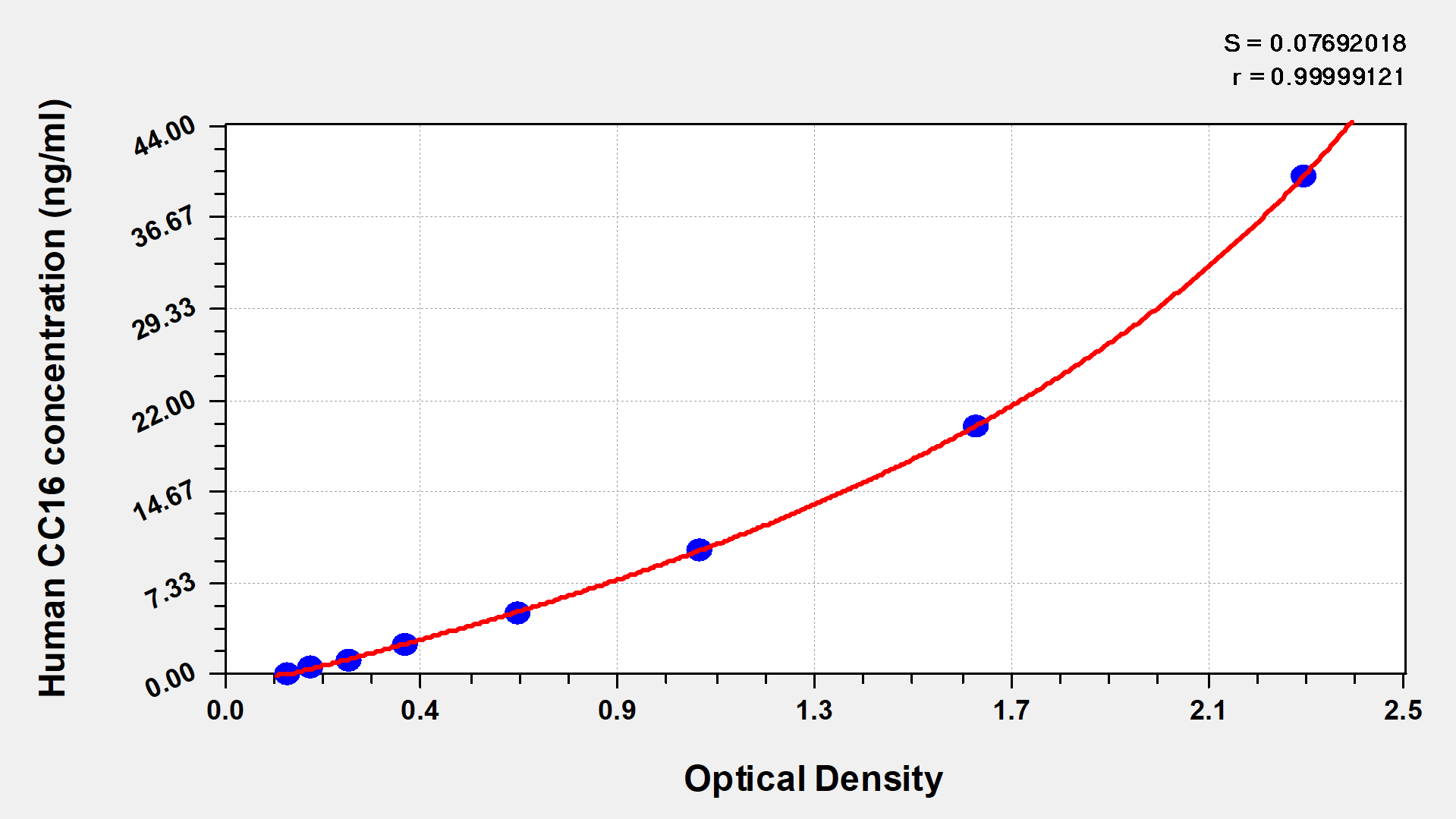The Human Clara cell protein (CC16) ELISA Kit quantifies CC16 in human serum, plasma, or tissue homogenates. It is not intended for diagnostic use and only used for scientific research in humans. The kit has undergone rigorous quality control in multiple parameters, including sensitivity, specificity, precision, linearity, recovery, and inter-batch difference. Refer to the product instructions for more details.
This assay is based on the Sandwich-ELISA mechanism (the CC16 in the sample is sandwiched between the pre-coated CC16 antibody and HRP-labeled CC16 antibody) and enzyme-substrate chromogenic reaction. The color intensity is positively related to the amount of CC16 bound in the initial step. The levels of CC16 in the samples can be determined by referring to the O.D. (optical density) of the samples to the standard curve.
CC16 is a homodimeric protein abundantly secreted in airways by the non-ciliated bronchiolar Clara cells. CC16 deficient transgenic mice were associated with a rising susceptibility of the lung to viral infections and oxidative stress, which demonstrated the potential role of CC16 in the protection of the respiratory tract against oxidative stress and inflammation. In vitro, CC16 participates in regulating the production and the activity of various mediators of the inflammatory response including PLA2, interferon-ɤ, and TNF-α. CC16 has also been found to suppress fibroblast migration or to bind various endogenous or exogenous substances such as polychlorobiphenyls (PCBs).






